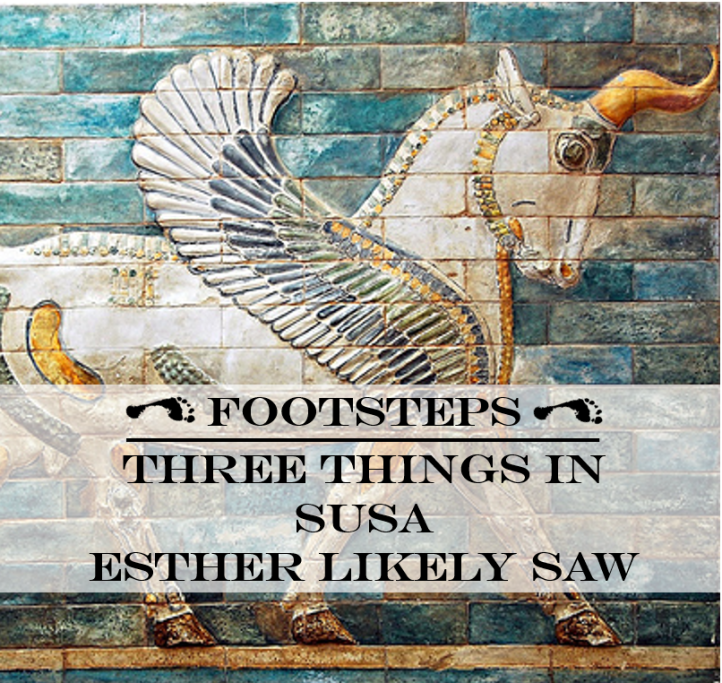
In 479 BC, the Persian King, Xerses,1 returned to Susa after his failed invasion of Greece.2 Susa was the winter capital of Persia, and it was here that he chose a new queen, having deposed his former queen, Vashti, for her refusal of his wishes (Est 1:10-22). A young Hebrew woman named Esther was chosen to enter the king’s harem and then elevated to the status of chief wife (Est 2:17).
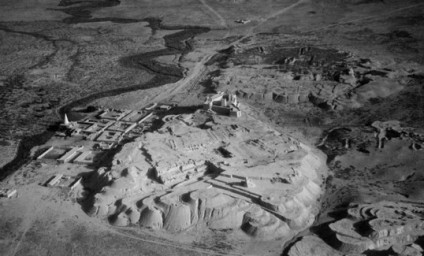
Critics today view the book of Esther as a fanciful court tale, likely written hundreds of years after the purported events. Other scholars have pointed out the author’s intimate knowledge of Persian laws and customs, as well as the language of that period. There are at least thirty people in the book whose names have Persian and Elamite origin, as well as twelve Persian loan-words, which would suggest a date of composition in or near the Persian era.3 Finally, the specific descriptions of the palace at Susa would indicate that the author was familiar with the layout. French archaeologist Jean Perrot was the Director of Excavations at the palace of Darius/Xerxes at Susa for over a decade. He concluded, “One today rereads with a renewed interest the book of Esther, whose detailed description of the interior disposition of the palace of Xerxes is now in excellent accord with archaeological reality.”4 Given its inclusion in the Septuagint, and the historical accuracy of the details contained within, it is logical to accept the book of Esther as an authentic record of Persian history in that period.
If the book that bears her name is historically accurate, and the evidence suggests that it is, then what might Esther have seen in her life as queen of Persia? Here are three things she likely saw in Susa.
The Palace Friezes
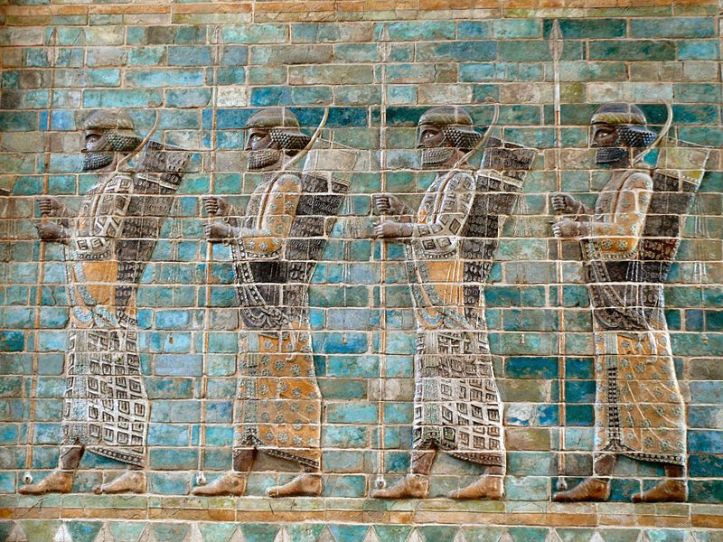
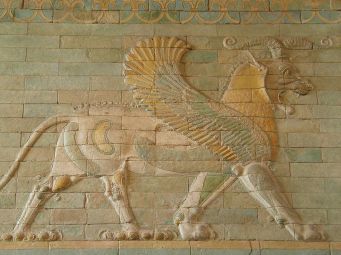
When Xerxes’ father, King Darius, built the palace at Susa, he ordered the construction of colorful friezes depicting humans and mythological animals using a combination of glazed and unglazed bricks.5 When French archaeologist Marcel Dieulafoy excavated at Susa, he discovered these bricks lying all throughout the palace. He was able to gather enough undamaged bricks to reconstruct the famous “Frieze of Archers,” which some believe depicts the famous Immortals – the elite company of 10000 Persian soldiers.6 Because the bricks were found all over the site, it has been suggested that these life-sized archers may have been a regular motif, positioned all throughout the palace.7 Other friezes discovered and reconstructed from the palace of Susa included images of griffon-lions and bearded sphinxes. These palace friezes help us understand the artistic style of the day and the type of clothing worn by the Persians. They also provide a vivid look into the world of Esther, as she no doubt passed friezes like these on a daily basis within the palace precinct.
The Bull Capitals
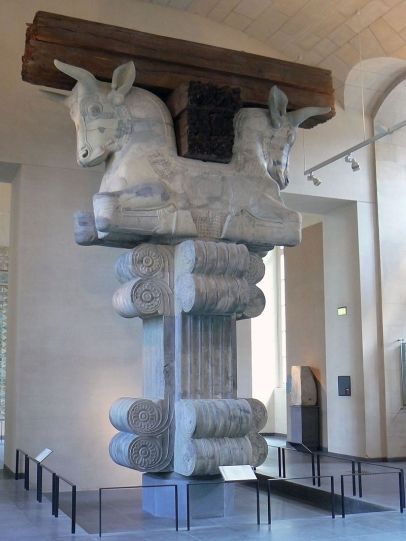
North of Xerxes’ palace was the Audience Hall, also known as the Court of Gardens (Est 1:5). It was a large area, covering 10000 square meters, and had 36 columns distributed throughout it. These fluted stone columns stood 20 meters high and were topped with capitals in the shape of bulls.8 The magnificent hall was surrounded on three sides with porticos and in the center, as one enters from the main entrance to the north, was a raised base that was likely where the king himself would sit.9 It was in this Audience Hall that Xerxes entertained his guests at the banquet described in first chapter of the book of Esther.10 While she herself was not at that particular banquet, she may have been at others. Today, several shattered bull capitals and broken columns lie strewn around the remains of the Audience Hall. A beautiful bull capital, taken to France during the early excavations of Susa, is on display at the Louvre.
The Inner Courtyard and Throne Room

In Esther 5:1 we read, “On the third day Esther put on her royal robes and stood in the inner courtyard of the king’s house, opposite the king’s house while the king was sitting on his royal throne in the royal house opposite the entrance.” She bravely entered the throne room, uninvited, to invite the king to a banquet where she intended to plead for salvation for her people, the Jews (Est 7:3-6).
Excavations at the palace in Susa have revealed the very spot where these events took place. The Palace had three courtyards: the large outer courtyard, a middle courtyard, and the inner courtyard. South of the inner courtyard were the king’s quarters and his throne room. To approach the king, one had to pass from the outer courtyard, though a double guardhouse into the middle courtyard, and then into the inner courtyard.11 Here, one makes a left-hand turn, and proceeds through the doors into the throne room of the king. This is the journey that Esther herself would have taken.
Summary
Archaeology helps give a face to facts and a context to culture. By journeying to the places that events actually took place we can better understand the biblical world. In many cases, the findings amassed over years of careful excavation affirm numerous details in the accounts written in the pages of Scripture. The Persian life that Esther lived in Susa is accurately reflected in the book of the Bible that bears her name, and understanding Persian history, as revealed by archaeology, in turn helps us to contextualize the ancient text.
Title Photo Credit: youngrobv / Flickr
Endnotes:
1 Xerxes is the Greek form of this king’s name. In Old Persian the king’s name was Khshayarsha, or Ahsiarsu in Akkadian and Ahasuerus in Hebrew. The sequence of Persian kings in Ezra 4:5-7 makes it clear that Ahasuerus was the son of Darius and the predecessor to Artaxerxes: thus, the Xerxes of history and the and Ahasuerus of the book of Esther are one and the same.
2 Herodotus, 9.108
3 Edwin M. Yamauchi, Persia and the Bible. (Grand Rapids: Baker Book House, 1990), 237.
4 “Shushan The Citadel With Bible In Hand,” Bible Reading Archaeology. September 20, 2018. https://biblereadingarcheology.com/2018/09/20/shushan-the-citedal/(Accessed Aug. 22, 2019).
5 Shahrohk Razmjou, Mike S. Tite, A. J. Shortland, Marion Jung, and Andreas Hauptmann, “Glazed Bricks in the Achaemenid Period,” 2004, p. 384. https://www.academia.edu/2390495/_Glazed_Bricks_in_the_Achaemenid_Period_in_German_and_English_Persien_Antike_Pracht_with_contribution_by_M.S._Tite_A.J._Shortland_M._Jung_and_A._Hauptman_eds._T._Stoellner_R._Slotta_and_R._Vatandoust_Deutsches_Bergbau-Museum_Bochum_Germany_382-393?auto=download (Accessed Aug. 23, 2019).
6 “Frieze of Archers,” Louvre Museum, https://www.louvre.fr/en/oeuvre-notices/frieze-archers (Accessed Aug. 23, 2019).
7 Ibid.
8 Edwin M. Yamauchi, Persia and the Bible. (Grand Rapids: Baker Book House, 1990), 293.
9 Jona Lendering, “Susa, Apadana,” Livius.org. https://www.livius.org/articles/place/susa/susa-photos/susa-apadana/ (Accessed Aug. 23, 2019).
10 Todd Bolen, “Susa,” BiblePlaces.com. https://www.bibleplaces.com/susa/ (Accessed Aug. 23, 2019).
11 Todd Bolen, “Site-Seeing: Surprising Susa,” Biblical Archaeology Review, 45:2 (March/April 2019): 18.

[…] of years after the purported events, and devoid of historical accuracy. Archaeology, however, has affirmed numerous details about the life of Xerxes and the stetting of the book of Esther. Simply put, the Xerxes of Scripture accords well with the Xerxes of history, and the chronology […]
[…] “[I]t is logical to accept the book of Esther as an authentic record of Persian history in tha… […]